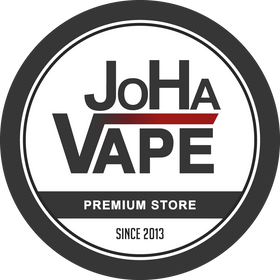
Recently, amongst vendors and vape enthusiasts alike, there has been a call to the producers of eLiquid to post their product test results. In particular, people want to know whether they are inhaling Diacetyl and Acetyl Propionyl.
Halo welcomes this.
Since our founding in 2009, we have taken great pride in doing things the right way. That’s why we’re happy to pull the curtain back a bit and provide you with some insight into our production process, as well as posting our test results.
Some Background
From the outset of our production process, the emphasis is on safety, quality and consistency—regardless of the time it takes. We refrain from setting launch deadlines so that we can better focus on finding the perfect combination of flavor and performance. The process includes intensive testing for a range of inhalation hazards—Diacetyl and Acetyl Propionyl included. Sometimes that can take months, in other cases it can take well over a year. The priority is to get the product right, not to push it to market as quickly as we can.
Once a formula has been perfected, tested by independent labs and finalized for production, the eLiquid is blended by trained chemists in a clean room environment—now housed in our state-of-the-art Gainesville, FL production facility.
Our nicotine base is prepared to current Good Manufacturing Practices (cGMP) and is tested for nicotine concentration via High-Performance Liquid Chromatography (HPLC) and Nuclear Magnetic Resonance Spectroscopy (NMR) to ensure the safety of our customers. We use only the highest quality United States Pharmacopeia (USP) Grade Nicotine, Propylene Glycol and Vegetable Glycerin. Our flavorings consist of Flavor and Extract Manufacturing Association (FEMA/GRAS) approved food additives, which are further screened to exclude known inhalation hazards including Diacetyl and Acetyl Propionyl.
We use precision mixing and filling equipment, in conjunction with our proprietary steeping process, to maintain consistent taste and quality in each and every batch. After our eLiquids are steeped, they are bottled in our iconic cobalt blue bottles. Beyond looking sleek, these glass bottles serve the dual purpose of protecting your eLiquid from light—which can degrade nicotine and adversely affect the flavor profile.
All of our eLiquids come standard with child-resistant caps. In addition to this, our packaging contains lot numbers – which allow full traceability of each bottle – best-by dating, and the eLiquid’s nicotine level.
What are Diacetyl and Acetyl Propionyl?
Diacetyl and Acetyl Propionyl are flavoring components that have been known to cause serious lung issues when inhaled. Halo does not produce eLiquids that include either of these two substances.
Originally, Diacetyl – also known as 2,3-butanedione – was used to accomplish buttery flavors in food products. It was most commonly used in the production of microwavable popcorn. Inhalation of Diacetyl damages lung function through obliterative bronchiolitis. Per the Center for Disease Control it can cause lung disease, chronic scarring and severe narrowing of the bronchiole airways. With enough exposure, a lung transplant may even be required to avoid suffocation.
Acetyl Propionyl – a.k.a. 2,3-pentanedione – is a flavoring similar to Diacetyl that is commonly found in vanilla, custard and buttery flavor profiles. It is also used as a solvent for paints, inks and lacquers. When heated and inhaled, Acetyl Propionyl can damage the lining of the respiratory tract and cause fibrosis – the formation of excess connective tissue – in the lungs. The CDC has also found that the inhalation of Acetyl Propionyl changes gene expression in the brain.
Again, Halo does not use either of these ingredients in our flavorings. Before we ever even mix a flavor into our base eLiquid, it is sent out for testing via gas chromatography and mass spectrometry. This assures us that our flavorings do not include either Diacetyl or Acetyl Propionyl. We don’t even allow our own employees to test an eLiquid until it comes back from the labs clean. And if we’re not going to risk it, we sure don’t want you to, either.
